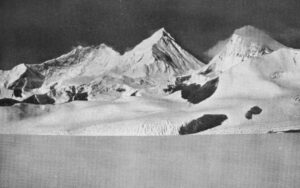As we post this, a line of climbers is slowly heading up from Camp 4 on the South Col, toward the highest point on Earth, a summit that they cannot see. The nearly full moon will light their way until 2:30 am. Then they will only have their headlamps to guide them through the high-altitude darkness. They will look forward when the sun finally rises and warms their numb bodies. Shortly afterward, they will reach the dazzlingly bright summit, under the cobalt blue skies of thin air.
Their views will be different from what Kami Rita Sherpa experienced on his record 26th Everest summit. The 11 men in the rope-fixing team stood on top around 7 pm, already after sunset, after climbing all day. It was a remarkably late arrival.
The summit, the dark, the wind, and the void, with nothing else around, created an overwhelmingly eerie experience. A video that the summit team took during those moments helps us imagine their feelings of isolation:
Typically, climbers will be somewhere around the Balcony by sunrise tomorrow, and the ones in front will summit shortly after. We will maintain our 24-hour coverage while these pushes continue.
Kami Rita was suffering from snow blindness by the time he reached Camp 2 and was airlifted to Kathmandu. He is in good health, but his father-in-law passed away in the city during Kami Rita’s summit push. He will spend the next several days grieving privately with his family.
Kami Rita climbed Mount Everest for the first time in May 1994. Since then, he has summited Everest 25 more times, plus Lhotse once, Manaslu three times, and Cho Oyu eight times.






